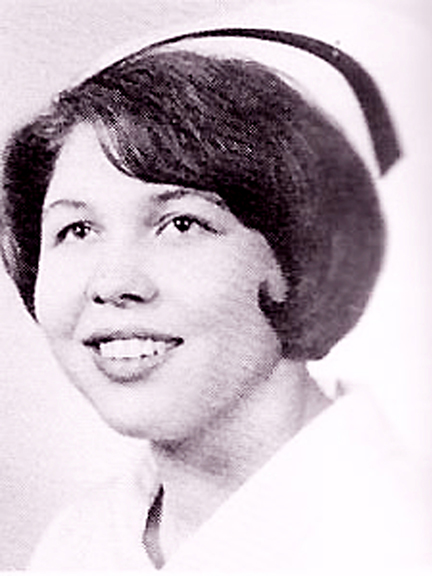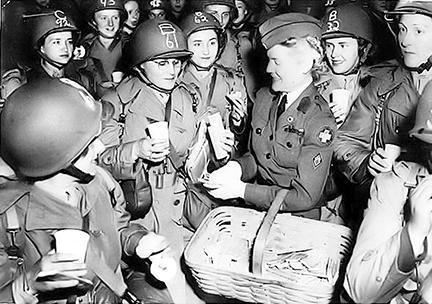By Keith Houin
Public Affairs Specialist
FORT POLK, La. -- Since 1978 the United States has recognized women in the country’s history, but March was not designated as Women’s History Month until 1987 when The National Women’s History Project petitioned Congress to establish a Women’s History Month, which they did when they passed Public Law 100-09 on March 12, 1987.
Women have played a vast role in the nation’s history in the fields of engineering, medicine, civil rights, the space program and more. Their role in the military is no exception.
The recent opening of combat roles to women in the military may seem like a new idea, but women have served in combat far longer than recent events.
In 1782 Deborah Samson Gannett, from Plymouth, Massachusetts, disguised herself as a man and enlisted under her deceased brother’s name, Robert Shurtleff Samson. She served in the Continental Army during the Revolutionary War for 17 months. To keep doctors from discovering her true gender she once cut a musket ball from her thigh. In 1804 she was granted a pension for her service.
In 1776, with her husband and 600 American Soldiers, Margaret Corbin also saw combat defending Fort Washington, New York.
The first documented death of a women in combat came during the Civil War in New Orleans. Sarah Rosetta Wakeman had enlisted as Private Lyons Wakeman. Her true gender was not known at the time of her death and her headstone reads Lyons Wakeman.
Also, during the Civil War Mary Edwards Walker would become the first women to receive the Medal of Honor for her efforts to treat the wounded.
These are just a few of a long line of women in the military paving the way for women serving today. Women have taken part in every conflict since the very first, though maybe not officially or legally.
World War I brought about major shifts to women in the military, when the Navy and Marine Corps allowed 12,000 women to enlist of which 400 died. Women also served in other capacities in the war effort. Women made up nearly 25 percent of aviation plant works. Women also worked in the Red Cross and United Service Organizations.
The numbers of women serving in the military had a drastic increase during World War II with 350,000 serving. Despite their non-combat roles, women were in dangerous situations. In the Philippines, 67 Army nurses were captured by the Japanese in 1942 and held as prisoners of war for three years.
World War II also saw the creation of official female branches of the services. The Women's Army Auxiliary Corps was created in 1942 and changed to the Women's Army Corps in 1943 – 150,000 women served under those corps. Also in 1942, the Navy started Women Accepted for Volunteer Emergency Service. WAVES worked in administrative, medical and communications positions. The Coast Guard and Marines followed suit with their own version of a women’s Corps or reserve.
With war ending, the more than 12 million men and women serving was reduced to 1,566,000 and resulting in fewer roles for women. However, in 1950 tensions were mounting on the Korean peninsula, and U.S. men and women would soon find themselves on foreign soil once again.
During the Korean War, about 50,000 women served in the military, many as Army nurses in forward-deployed Mobile Army Surgical Hospitals and aboard ships. Eight died in combat.
At the same time the Vietnam War had begun and by 1954 U.S. involvement had escalated. Once again women found themselves overseas with their mostly male counterparts. But, by this time women were serving in a variety of roles and even command positions. U.S. Navy Cmdr. Elizabeth M. Barrett became the first and highest-ranking woman naval line officer to serve in the Vietnam War, and the first woman to assume a command billet in a combat zone.

The two been sent to a hospital in Pleiku to help out during a push. On the return trip their C-7B Caribou aircraft crashed and they, along with 24 other military and civilian personnel, were killed. Orlowski and Alexander were posthumously awarded Bronze Stars.
Women continued to serve and break ground in various military roles.
More than 40,000 women served in the 1991 Gulf War engaging with enemy forces at an unprecedented level. The U.S.S. Acadia left San Diego for the Persian Gulf on Sept. 5, 1990 with 1,260 personnel on board, 360 were women. This marked the first time men and women shipped out together in wartime conditions on a U.S. Navy vessel. The Gulf War was also the first time women and men served in integrated units within a warzone.
During that same time period 1st Lt. Jeannie M. Leavitt became the first U.S. female fighter pilot in 1993. She was later the first woman to command a U.S Air Force combat fighter wing, and is currently a brigadier general and commands Air Force Recruiting Service.
In 1994 Defense Secretary Les Aspin implemented a rule that prohibited women from serving in units where the primary mission was to engage in direct ground combat. However that did not stop women from achieving new heights.
On Nov. 14, 2008, Ann Dunwoody became the first woman in U.S. military history to achieve the rank of four-star General.
The wars in Iraq and Afghanistan saw a change in the nature of warfare and women played a more active role.
Then-Sgt. Leigh Ann Hester became the first female Soldier to receive the Silver Star for exceptional valor in close–quarters combat in 2005. Leading her team in a 25-minute firefight in near Salman Pak, Iraq, Hester used an M203 grenade launcher and hand grenades to cut off the enemy.
Pfc. Monica Lin Brown also received the Silver Star for her 2007 actions in Afghanistan. After an improvised explosive device detonated on the side of a vehicle in her convoy, Brown protected wounded Soldiers with her own body and ran through gunfire to save their lives.
Since the beginning of the U.S. history women have continued to serve and increased opportunities have opened up for them within the ranks, and in January 2013 all the barriers to serving in their field of choice were removed.
Defense Secretary Leon Panetta announced that the ban on women serving in combat roles would be lifted, leveling the playing field. Chiefs of Staff Chairman Gen. Martin Dempsey said, "The time has come to rescind the direct combat exclusion rule for women and to eliminate all unnecessary gender-based barriers to service."
This paved the way for female Soldiers like Capt. Kristen Griest and 1st Lt. Shaye Haver to become the first two women to graduate from the Army Ranger School in Aug. 21, 2015. It was the first year the Army opened the course to women. Secretary of the Army John M. McHugh said in a statement, "This course has proven that every Soldier, regardless of gender, can achieve his or her full potential."
With the barriers down, the role of women in the military will continue to expand, encouraging more opportunities for female Soldiers to march toward the future while accomplishing extrordinary things.




